Chiu Chia-hao (邱家豪) once desperately chased down a butcher truck to obtain caul fat to recreate his late grandma’s signature dragon-phoenix leg (龍鳳腿), a fish paste snack made to resemble chicken wings. And Cheng Ching-teng (鄭靖騰) thought he came across the perfect specimen to make his heritage cuttlefish balls, only to find that it was not suitable for blending into paste.
“Dad told me, and I didn’t listen,” Cheng laughs.
Having little formal training, the two went through much trial and error until they perfected their family traditions. Even after 52 years in the fish ball business, Shih Mo-chou (石莫愁) wakes up at 3am every day to personally taste the shop’s pastes, vividly recounting all the times that things went wrong when she didn’t do so.
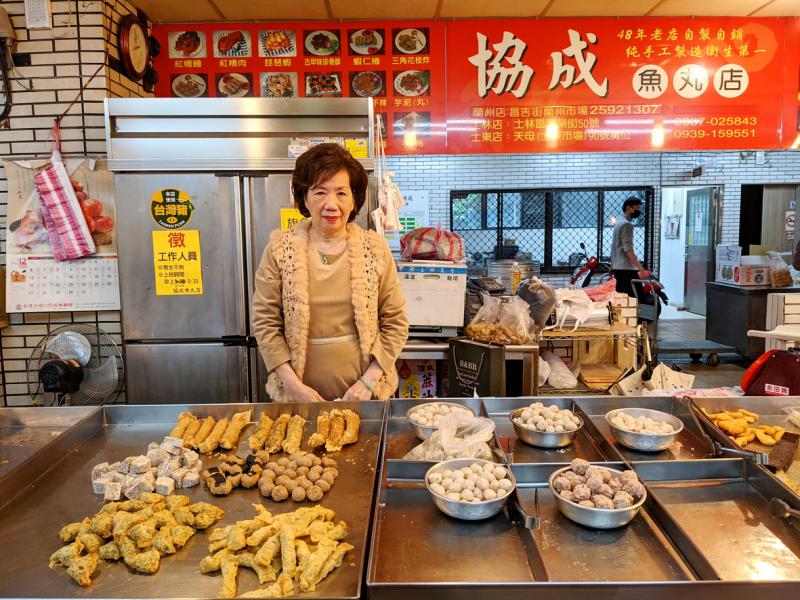
Photo: Han Cheung, Taipei Times
Chiu’s Dragon-Phoenix Leg (邱記龍鳳腿), Cheng’s Da Fong Fish Ball (大豐魚丸) and Shih’s Xie Cheng Fish Ball (協成魚丸) were among 30 nationwide winners in the government-sponsored Fish Paste King competition (魚漿王爭霸戰), the results of which were announced late last month. The offerings were colorful and diverse, as fish or seafood paste is a staple of the Taiwanese diet and can come in countless shapes and forms, from balls to cakes to dumplings.
In the old days, it was a way to make use of excess fish and unsellable specimens or scraps, but today fish-paste products are ubiquitous as snacks at night markets or side dishes in Taiwanese eateries.
XIE CHENG FISH BALL (協成魚丸)
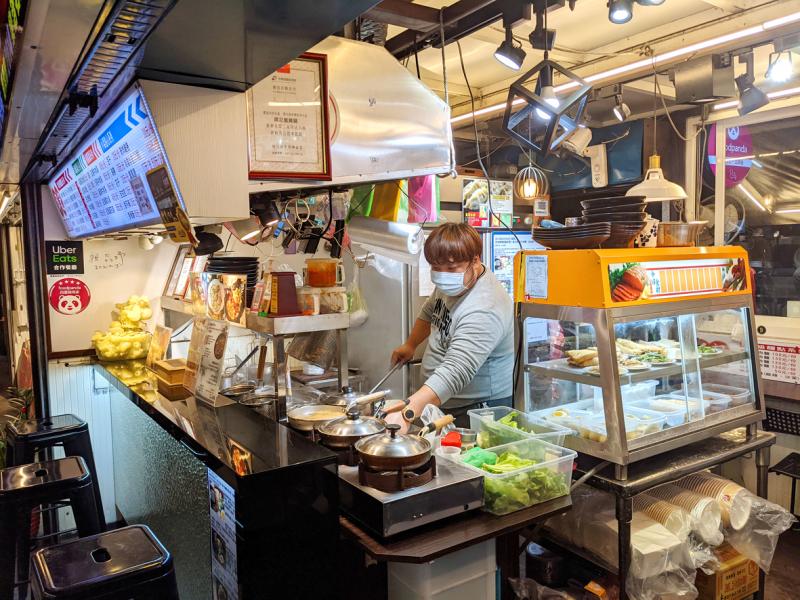
Photo: Han Cheung, Taipei Times
Growing up in a wealthy, scholarly family, Shih was clueless about food preparation until she opened up shop with her husband at the age of 23. Her late husband was having difficulty finding work, so a fish vendor at Taipei’s Dalong Market (大龍市場) suggested that they start a fish ball operation, which was lucrative at that time.
Shih’s husband was in charge of hand-mincing the paste and other heavy tasks, and they hired workers to help out, but the taste, shape, texture and creative process all went through Shih. She laughs that once she changed the recipe for her tempura eight times, and her husband would often complain that she would be tweaking something for 364 days per year, only taking Lunar New Year off.
Today, the shop is located in Lanzhou Street Market (蘭州市場) with two branches in Shihlin District. Shih’s mother also didn’t know how to cook, but encouraged her to experiment. At one point Shih had created 48 different offerings (not all of them included fish paste). Last month’s award-winning products are swordfish balls with celery and shrimp rolls.
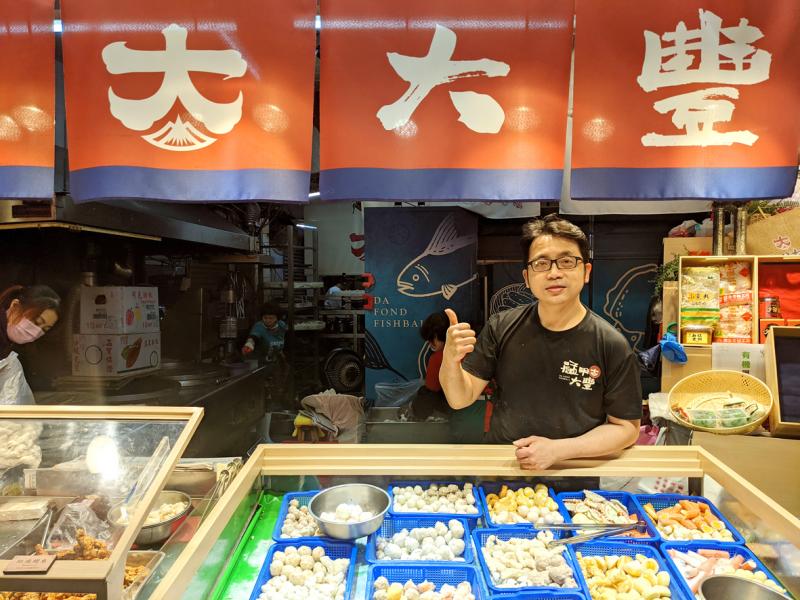
Photo: Han Cheung, Taipei Times
Today the shop only sells a handful of its former creations not just due to some ingredients being hard to source, but also because of Shih’s old age. Shih still insists on personally mixing the paste and tasting it before it can be sold. Once, she was so angry that one of her long-time staff messed up a large order that she vomited on the spot, furious that her decades-old name was tarnished.
“Everything has to pass through my mouth,” she says. “I’ll even taste it if it’s raw. I’m very insistent and attentive, and I will not stop trying until it’s acceptable. I’m also very meticulous with cleanliness.”
Xie Cheng Fish Ball (協成魚丸)
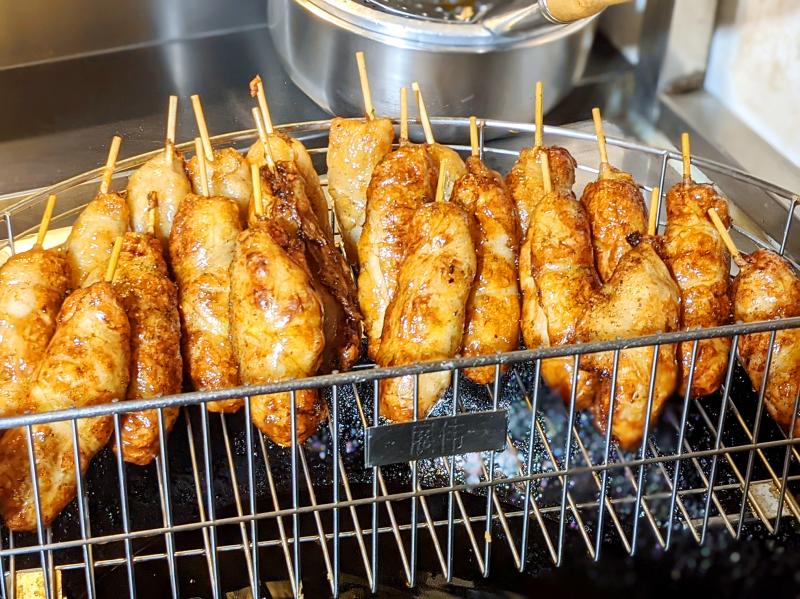
Photo: Han Cheung, Taipei Times
Stall #148, Lanzhou Market, 55 Changji St, Taipei City (台北市昌吉街)
Open: Tuesday to Sunday from 7:30 to 1pm
Tel: (02) 2592-1307
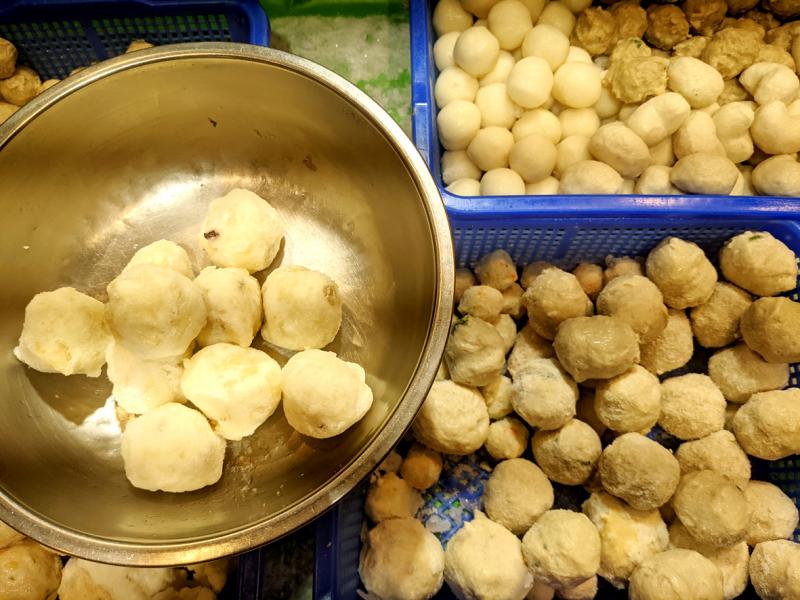
Photo: Han Cheung, Taipei Times
On the Net: www.fishball.idv.tw
CHIU’S DRAGON-PHOENIX LEG (邱記龍鳳腿)
After the Chiu family conducted their annual ancestor worship ceremony, which included a chicken offering, there was always a dilemma: How would they split two drumsticks between 10 hungry children? To prevent bickering, Chiu’s grandmother would always fry up a batch of dragon-phoenix legs and tell the kids that this was dragon-phoenix meat, which is more precious than chicken.
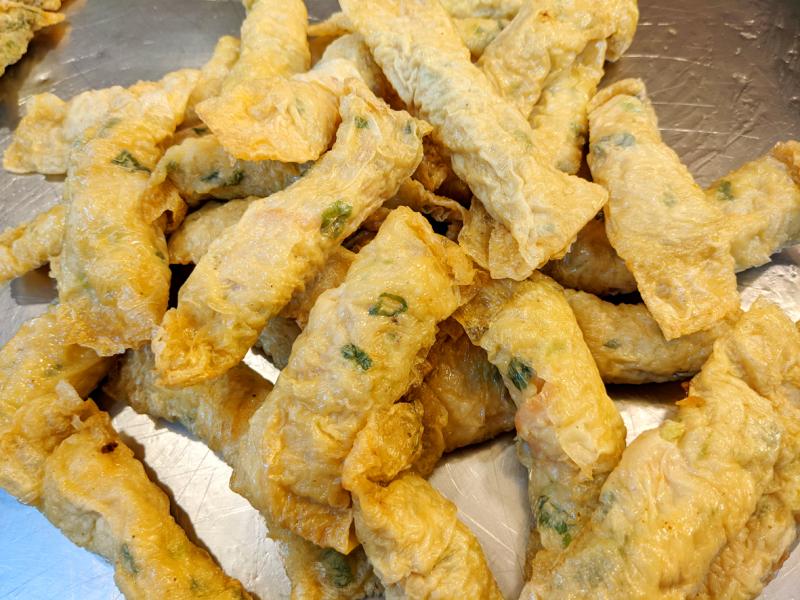
Photo: Han Cheung, Taipei Times
Of course the Chiu’s didn’t invent the snack, it has since the 1850s been a speciality of New Taipei City’s Rueifang District (瑞芳). But Chiu laments that outside of his hometown, few people know what it is. When he took over the shop in New Taipei City’s Sijhih Tourist Night Market (汐止觀光夜市) last year after his father got sick, he decided to draw people in with the more familiar beef noodles and dumplings first, then try to introduce the dragon-phoenix leg.
At NT$17 per “leg,” it’s a complex dish consisting of shark paste, cabbage, spring onions, onions, water chestnut and fatty pork wrapped in layers of caul fat membrane. The caul fat is the hardest to obtain due to modern pig slaughtering methods, but Chiu refuses to use bean curd as a substitute.
“Of course the beef noodles are more lucrative, but there are certain principles one must insist on while doing business,” he says. “This is my father’s shop. I can’t just dismiss everything he’s done, otherwise he’ll feel sad when he comes to visit. I’m still young, and I have time to insist, share and preserve traditions.“
Chiu’s Dragon-Phoenix Leg (邱記龍鳳腿)
Stall #13, Sijhih Tourist Night Market (汐止觀光夜市), Sijhih District, New Taipei City (新北市汐止區)
Open: Daily from 5am to 11:30pm
Tel: (02) 8691-6396
On the Net: tinyurl.com/yyd6rtg8
DA FONG FISH BALL
Cheng worked in sales for an electronics firm before returning home to promote the goods of his family business, which his grandfather first launched in Keelung in 1957. If he was hawking other people’s products, he might as well do his own, he says.
The family relocated to Wanhua shortly after the shop opened, and began manufacturing swordfish balls out of their home. Cheng’s father opened two stores, one at today’s location at Dongsanshui Street Market (東三水街市場).
Since Cheng was doing mostly sales, he had much to learn about fish paste production after his father died, even traveling to Kaohsiung to visit an old master.
He retains the original swordfish balls — although he reduced the oil content to fit today’s health trends — and other classic staples such as the cuttlefish balls and tempura. But ever since tourists began visiting the area due to the nearby Bopiliao Historic Block (剝皮寮歷史街區) and adjacent Xinfu Market (新富市場), he’s added street snacks such as fried burdock root.
Although Cheng speaks glowingly of his swordfish products, he submitted the cuttlefish ball to the contest as he confidently states that it is the only such product in Taiwan that is purely cuttlefish — others mix in fish paste and other ingredients to save costs. Before it was made only with cuttlefish legs since the head cannot be made into paste, but Cheng is now adding chunks of chewy head into the mix “because young people like it more.”
“But the old people have trouble chewing it, so I make two types now,” he says. “The key to good business is to constantly ask the opinion of your customers and improve accordingly.”
Da Fong Fish Ball (艋甲大豐)
Stall #44, Dongsanshui Street Market (東三水街市場) 62, Sanshui Street, Taipei City (台北市三水街62號)
Open: Tuesday to Sunday from 8am to 3pm
Tel: (02) 2306-0532
On the Net: www.facebook.com/DAFONDFISHBALL1957
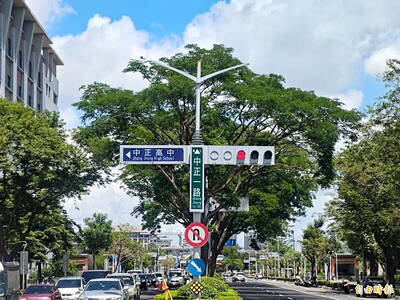
One of the most important gripes that Taiwanese have about the Democratic Progressive Party (DPP) is that it has failed to deliver concretely on higher wages, housing prices and other bread-and-butter issues. The parallel complaint is that the DPP cares only about glamor issues, such as removing markers of Chinese Nationalist Party (KMT) colonialism by renaming them, or what the KMT codes as “de-Sinification.” Once again, as a critical election looms, the DPP is presenting evidence for that charge. The KMT was quick to jump on the recent proposal of the Ministry of the Interior (MOI) to rename roads that symbolize

On the evening of June 1, Control Yuan Secretary-General Lee Chun-yi (李俊俋) apologized and resigned in disgrace. His crime was instructing his driver to use a Control Yuan vehicle to transport his dog to a pet grooming salon. The Control Yuan is the government branch that investigates, audits and impeaches government officials for, among other things, misuse of government funds, so his misuse of a government vehicle was highly inappropriate. If this story were told to anyone living in the golden era of swaggering gangsters, flashy nouveau riche businessmen, and corrupt “black gold” politics of the 1980s and 1990s, they would have laughed.

It was just before 6am on a sunny November morning and I could hardly contain my excitement as I arrived at the wharf where I would catch the boat to one of Penghu’s most difficult-to-access islands, a trip that had been on my list for nearly a decade. Little did I know, my dream would soon be crushed. Unsure about which boat was heading to Huayu (花嶼), I found someone who appeared to be a local and asked if this was the right place to wait. “Oh, the boat to Huayu’s been canceled today,” she told me. I couldn’t believe my ears. Surely,

When Lisa, 20, laces into her ultra-high heels for her shift at a strip club in Ukraine’s Kharkiv, she knows that aside from dancing, she will have to comfort traumatized soldiers. Since Russia’s 2022 invasion, exhausted troops are the main clientele of the Flash Dancers club in the center of the northeastern city, just 20 kilometers from Russian forces. For some customers, it provides an “escape” from the war, said Valerya Zavatska — a 25-year-old law graduate who runs the club with her mother, an ex-dancer. But many are not there just for the show. They “want to talk about what hurts,” she